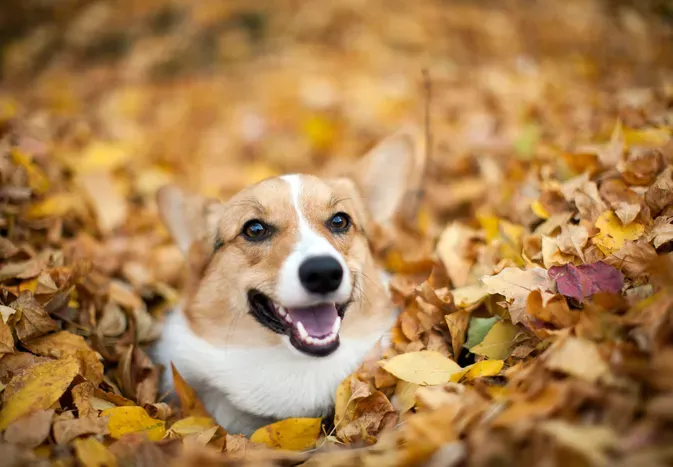Which of These 9 Autumn Plants and Items Are Toxic for Dogs?
Updated on 04/26/24

Which of These 9 Autumn Plants and Items Are Toxic for Dogs?
Autumn is a beautiful time of year, with its vibrant foliage and crisp air. However, it's important to be aware of the dangers that autumn can pose to our furry friends. Many plants and items that are common during this season can be toxic to dogs.
In this blog post, we'll discuss 9 autumn plants and items that are toxic to dogs. We'll provide information on the symptoms of poisoning, as well as tips on how to prevent your dog from ingesting these dangerous substances.
1. Acorns
Acorns are the nuts of oak trees. They are a common sight in autumn, and they can be tempting for dogs to eat. However, acorns contain tannins, which can cause gastrointestinal upset, vomiting, and diarrhea. In severe cases, acorn poisoning can lead to liver failure and death.
2. Apples
Apples are a healthy snack for humans, but they can be dangerous for dogs. The seeds of apples contain cyanide, which is a poisonous substance. Even a small amount of cyanide can cause serious health problems, including vomiting, diarrhea, seizures, and even death.
3. Chrysanthemums
Chrysanthemums are a popular autumn flower. However, they are toxic to dogs. The flowers contain pyrethrins, which can cause gastrointestinal upset, vomiting, and diarrhea. In severe cases, pyrethrin poisoning can lead to seizures and even death.
4. Grapes
Grapes are a healthy snack for humans, but they are toxic to dogs. All parts of the grape plant, including the grapes themselves, the leaves, and the stems, are poisonous to dogs. Grape poisoning can cause vomiting, diarrhea, abdominal pain, and lethargy. In severe cases, grape poisoning can lead to kidney failure and death.
5. Ivy
Ivy is a common plant that is often used as a ground cover. However, ivy is toxic to dogs. The leaves of ivy contain saponins, which can cause gastrointestinal upset, vomiting, and diarrhea. In severe cases, saponin poisoning can lead to seizures and even death.
6. Mushrooms
Mushrooms are a common sight in autumn. However, many mushrooms are toxic to dogs. The toxins in mushrooms can cause a variety of symptoms, including vomiting, diarrhea, abdominal pain, and seizures. In severe cases, mushroom poisoning can lead to liver failure and death.
7. Oak Leaves
Oak leaves are a common sight in autumn. However, they can be toxic to dogs. The leaves of oak trees contain tannins, which can cause gastrointestinal upset, vomiting, and diarrhea. In severe cases, tannin poisoning can lead to liver failure and death.
8. Pumpkins
Pumpkins are a popular autumn decoration. However, they can be dangerous for dogs to eat. The stems and leaves of pumpkins contain cucurbitacins, which can cause gastrointestinal upset, vomiting, and diarrhea. In severe cases, cucurbitacin poisoning can lead to seizures and even death.
9. Rhubarb
Rhubarb is a common autumn plant that is often used in pies and other desserts. However, rhubarb is toxic to dogs. The leaves of rhubarb contain oxalic acid, which can cause gastrointestinal upset, vomiting, and diarrhea. In severe cases, oxalic acid poisoning can lead to kidney failure and death.
How to Prevent Your Dog from Ingesting Toxic Substances
The best way to prevent your dog from ingesting toxic substances is to keep them away from these dangerous items. Keep your dog on a leash when you are walking in areas where there may be toxic plants or items. Do not allow your dog to eat anything that you do not know is safe for them. If you are unsure whether or not a plant or item is toxic to dogs, consult with your veterinarian.
What to Do If Your Dog Ingests a Toxic Substance
If you think your dog has ingested a toxic substance, call your veterinarian immediately. The sooner your dog receives treatment, the better the chances of a full recovery. Your veterinarian will likely need to know the following information:
* What type of substance your dog ingested
* How much of the substance your dog ingested
* When your dog ingested the substance
* Your dog's symptoms
Your veterinarian will use this information to determine the best course of treatment for your dog.
Autumn is a beautiful time of year, but it's important to be aware of the dangers that this season can pose to our furry friends. By following the tips in this blog post, you can help keep your dog safe from toxic plants and items.
Explore More Pets

Basic Training
Puppy and Baby Introductions

Working Dog Breeds
All About Search and Rescue Dogs

Dog Treatments
Puppy Vaginitis: Signs, Causes and Treatment

Dog Adoption
After More Than 1,200 Days in the Shelter, Coco Goes Home

Basic Training
How to Train Your Puppy to Go on Potty Pads

Hybrid Dog Breeds
The Difference Between a Mutt, Mixed Breed, or Designer Dog?

Dog Treatments
Nail Problems in Dogs

Puppies
7 Reasons Why Two Dogs Are Better Than One